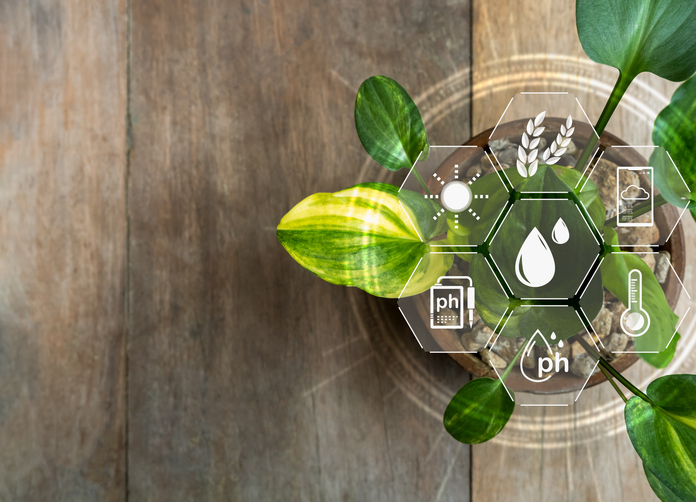Liquid sensors play an important role in environmental monitoring so as to safeguard our planet’s resources. From detecting pollution to maintaining water quality and promoting conservation efforts, these sensors have become indispensable tools. This article reviews what environmental monitoring is, and the role of liquid sensors in populations with limited access to clean water.
What is Environmental Monitoring
Environmental monitoring refers to the tools and techniques for observing an environment, characterizing its quality, and establishing environmental parameters. Its main objective is to manage and minimize the impact that human population, industrial activities, and energy consumption have on the environment. Environmental monitoring helps to ensure compliance with laws and regulations, mitigate harmful effects on nature, and protect the health of all living organisms. There are three main types of environmental monitoring including air/atmosphere, soil, and water. Each type of environmental monitoring involves using a range of analytical techniques to obtain data from samples, which is then used to create actionable insights to improve the environment. Considering the wide variety of analytical techniques available, liquid sensors play a pivotal role especially when it comes to water monitoring.
Liquid Sensors
A liquid sensor is a device whose design allows it to detect and measure the components of liquids, whether the liquids are chemicals, oils, water or other fluids. Liquid sensors play an important role in environmental monitoring especially in maintaining water quality. When used in this role, they are often referred to as water quality sensors.
Water Quality Sensors in Environmental Monitoring
Water quality sensors serve in measuring certain parameters that represent the usability of a water source. The use of these sensors is necessary in ensuring availability of safe drinking water for populations that do not have easy access to it. It also helps in preservation of aquatic life and agricultural products among these populations. Some common parameters that water quality sensors monitor include:
-
- Conductivity: This is a measure of the ability of water to conduct electric current. Moreover, it relates to the presence of ion concentrations and salinity, which make water unsafe for drinking when present in large amounts.
-
- Temperature: Temperature affects how much oxygen and carbon dioxide is dissolved in water, microbial activity, and overall ecosystem dynamics. Sudden changes in temperature can stress aquatic life, thus necessitating the constant monitoring of this parameter.
-
- pH: This measures the acidity or alkalinity of water, which influences the type of aquatic species that can survive, as well as the solubility of various substances.
-
- Dissolved Oxygen: The presence of dissolved oxygen (DO) in water helps in the proliferation of aquatic life, while low DO can lead to hypoxia and harm aquatic life.
-
- Turbidity: This indicates the clarity of water and is influenced by suspended particles. Low turbidity allows light to penetrate water bodies for the benefit of aquatic plant growth.
-
- Specific Ion Concentrations: Monitoring ions like phosphorus and nitrogen is important as their presence can lead to harmful algae blooms and eutrophication.
Smart Environmental Monitoring as a Solution to Underserved Populations
The previous section shows the plethora of parameters that need monitoring to ensure water quality. For areas not having access to clean water, or underserved populations, implementing monitoring could be difficult due to lack of personnel who can interpret data and take the necessary action. But, Smart Environmental Monitoring (SEM) systems provide a sustainable solution to such areas. SEM systems entail connecting the monitoring sensors to logging devices or cloud platforms for real-time data transmission, analysis, and visualization. These systems incorporate the use of modern sensors, Machine Learning (ML) techniques, and Internet of Things (IoT). As a result, the need for on-site human intervention is minimal, and data is available remotely, so that qualified professionals can make informed decisions.
Challenges and Considerations
While the potential of liquid sensors in SEM systems is undeniable, certain challenges need addressing to maximize their effectiveness. Some of them include:
-
- Affordability: Traditional liquid sensor technologies are costly to procure and maintain, thus, posing a barrier to adoption in low-resource environments. But, with ongoing advancements in sensor manufacturing and the emergence of open-source hardware initiative, capital and operation costs are getting lower. Hence, making these technologies more accessible. For example, there is increase in the adoption of sondes, which are sensors that can detect a wide variety of parameters.
-
- Calibration and Maintenance: Ensuring the accuracy and reliability of sensor data requires regular calibration and maintenance. Unfortunately, in underserved areas, this may not be possible due to unavailability of skilled personnel and resources. But the use of innovative solutions like self-calibrating sensors and remote monitoring platforms can help mitigate this challenge.
-
- Data Interpretation: The sheer volume of data generated by liquid sensors can overwhelm decision-makers, especially in areas with limited technical capacity. SEM systems are able to streamline data collection, analysis, and visualization, to extract actionable insights and inform evidence-based decision-making. In addition, they allow for integration of sophisticated software, which enables automation in decision-making.
-
- Energy Efficiency: Real-time monitoring of environmental parameters requires continuous power supply for sensors and other systems. Modern sensors tend to have lower power ratings which allow them to work efficiently with renewable energy resources.
-
- Community Engagement: Successful implementation of SEM systems in underserved areas relies on active engagement with local communities. Building trust, fostering partnerships, and empowering communities to take ownership of monitoring efforts are critical for long-term sustainability and impact.




